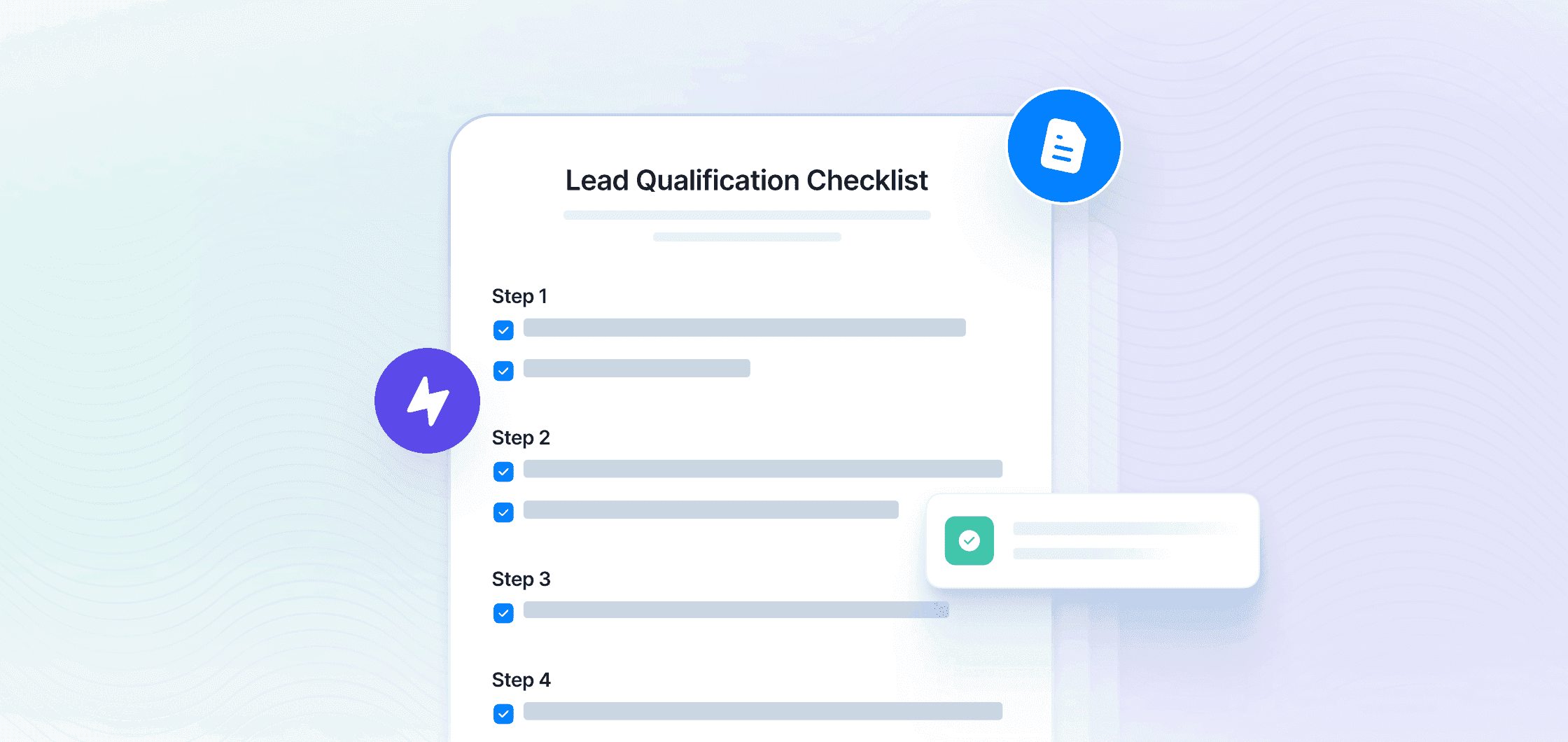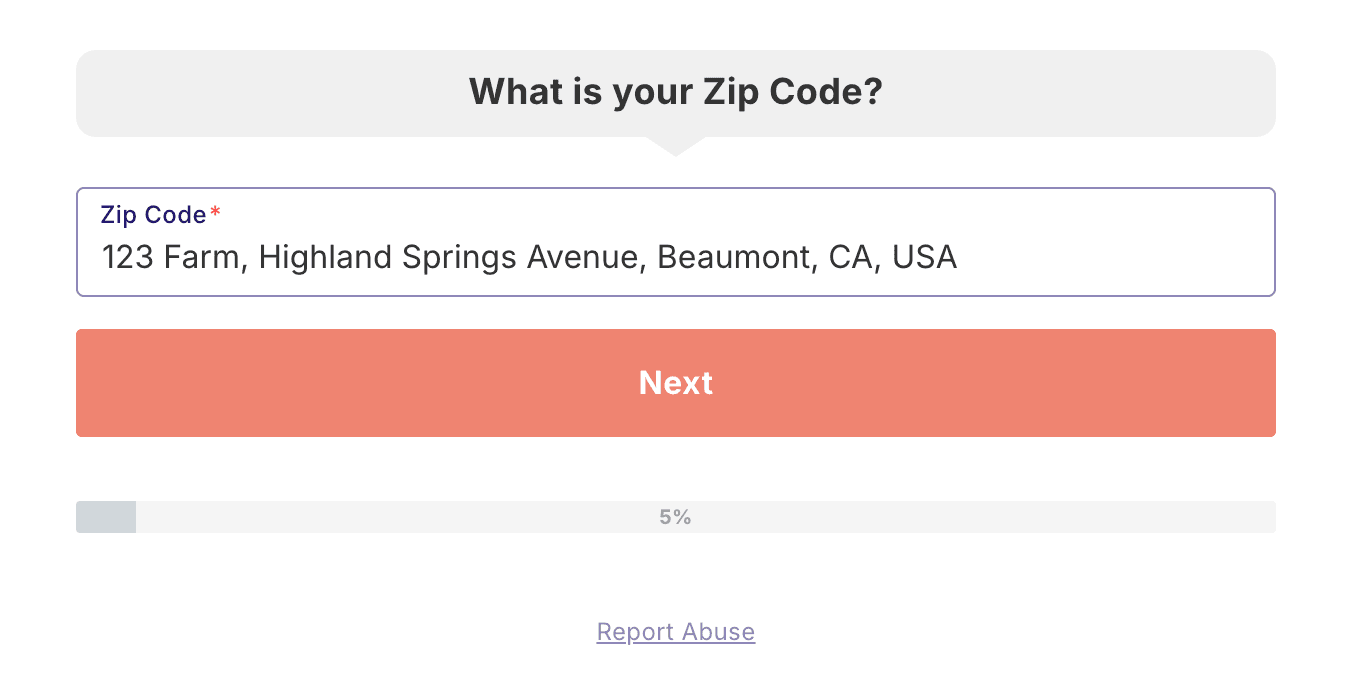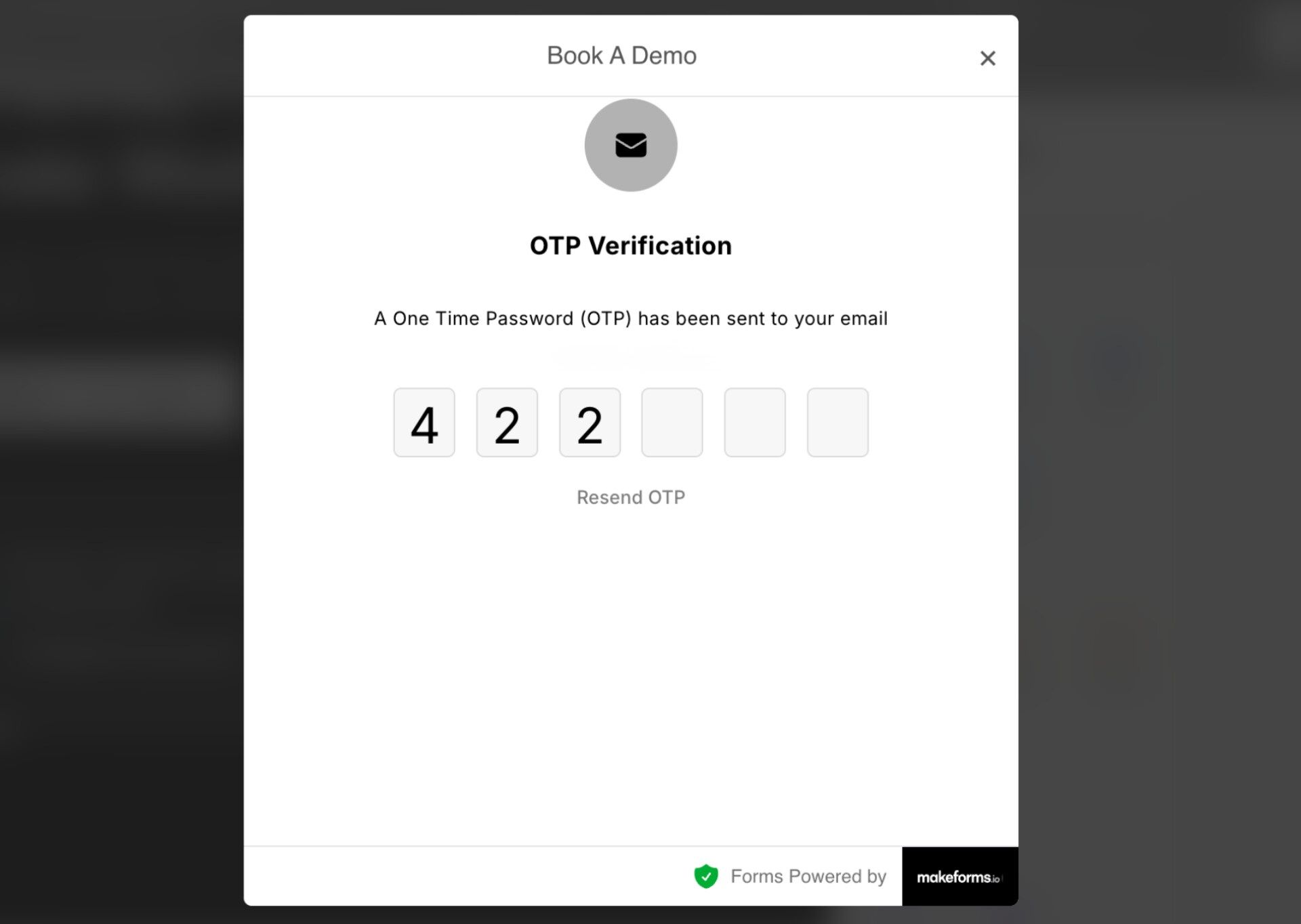Lead qualification is the process of evaluating whether a potential customer is a good fit for your product or service—before they get too far in your sales pipeline. It helps you focus your time and resources on leads who are actually ready to engage. A strong lead qualification process improves conversion rates, shortens sales cycles, and reduces the load on your sales team.
5 Min Read | November 07, 2025
Lead Qualification Checklist: A Step-by-Step Guide for 2025
Not all leads are worth chasing—and that’s okay! This guide walks you through smarter ways to qualify leads using clever form strategies and tools like MakeForms. From filtering low-intent users to verifying real contacts, it’s your roadmap to better leads and faster conversions.

With every business now online and every form just a tap away. Not every lead is a good lead.
That’s right, we said it. While capturing contact details has become relatively easy with digital first lead generation, identifying which leads are actually worth your time is where the real challenge lies.
That’s where lead qualification comes into play.
Today, we discussed tools and techniques to generate qualified leads, by filtering out low-intent users and bringing in high-quality prospects to the forefront. Welcome to our Lead Qualification Checklist - a step by step guide for brands in 2025.
What is Lead Qualification?
Lead qualification is the process of finding the right match between a lead and your product or service, before they hit submit on your lead gen form. Without a qualification system in place, your sales pipeline fills up with unfit leads, resulting in:
- Wasted time on follow-ups that go nowhere
- Longer sales cycles
- Lower conversion rates
- Frustrated teams and bloated CRMs
By qualifying leads early you can focus your resources on people who are actually ready to engage.
Form-First Lead Qualification Checklist – With Examples
1. Attract the Right Traffic
If the wrong audience is landing on your form, even the smartest lead qualification process won’t help. That’s why traffic quality matters as much as form quality.
- Targeted Ads: Use niche keywords, platforms, and language that only speak to your ideal customer. Avoid generic terms that bring in the masses without intention.
- Landing Page Messaging: Be crystal clear about who your offer is for - and who it’s not. Your page should qualify people before they ever click “Submit.”
- Avoid Clickbait: Overpromising with vague headlines? You'll only end up with a CRM full of unqualified users.
2. Ask Filtering Questions on the Form
- “Not for everyone” Strategy
Okay so now, the user has gone through your ads and blogs, and landed on your lead generation form. Your lead form opens with “What is your name?”
This is a completely missed opportunity to qualify! By jumping straight into generic questions, you’re treating every visitor the same. But not every visitor is a fit. This moment - before the first field is even filled - is your first chance to set the tone and filter for quality. Here’s an example:

- If you are collecting real estate leads only from one state, your first qualifying question can be:
What is your zip code? - If you’re an educational institute running a lead generation campaign for a program that starts in 30 days, your first qualifying question could be:
When do you plan to join the program?
Each of these examples helps you start your lead qualification process at the top because you’re sending a clear message about who you serve best. This approach helps you connect with serious, high-intent leads while gently filtering out those who aren’t the right fit right now.
In the backend your form can filter these leads and help save your team a lot of time and effort. Check out MakeForms “Data Filters” feature that can help you do this in seconds.
- Lead Prioritization Using Conditional Logic
Conditional logic is a powerful way to prioritize high-value leads instantly and move them faster through your funnels. It can be used in many strategic ways:
--> Gentle Drop-Offs
If you don’t want unqualified leads to fill out your form further, to save their time and yours. You can use conditional logic to automatically end the form! It’s simple, here are some examples

- If a user selects "I'm just researching," instead of proceeding, show:
“It sounds like you're still exploring options! When you're ready to move forward, we'd love to hear from you. Bookmark this page for later.” - If a user selects a zip code that doesn’t match your area of service, instead of proceeding, show:
"Sorry, we don’t currently service your area. Leave your email to get notified when we expand to your location!"
Or
You can also redirect them to your blog, resource library, or free newsletter instead if you can’t service them right away!
--> Personalize Follow-Up Questions (Using Conditional Logic)
This is especially useful when a business offers multiple services or product lines, and different types of leads require tailored qualifying questions. Here are some examples of how to use conditional logic to nurture leads while they fill the form:
This moving company has 2 types of services and asks the user to select the service type as the first question. Then conditional logic kicks in to shape the rest of the journey, where the form adapts in real time, only showing questions that are relevant to the selected option.
This acts as a built-in lead qualification process. Each step subtly filters for intent and readiness, ensuring that only high-intent leads reach the end of the form.
Here’s a video where we explain how to use conditional logic to help users self-identify their needs across a variety of of services.
Once a user selects what they need help with, the form instantly adapts, showing only the relevant questions. This tailored experience not only keeps the flow smooth and user-friendly but also qualifies leads behind the scenes, ensuring the form collects precise, actionable data based on each user's intent.
3. Use Verification Tools
Even if you have qualifying questions, sometimes fake emails, bot activity, spam, can slip through the cracks. That’s why we recommend using a verification tool to qualify leads further. These built-in checks act like a gatekeeper, ensuring that only real, engaged, and trustworthy leads make it through your funnel. Many top of the line form makers like MakeForms already have these features:

- Email Verification: Your form tool should automatically catch typos, invalid formats, or fake domains, preventing the form from being submitted until a valid email address is entered.
- Phone or Email OTP Verification: Adding an OTP (One-Time Password) verification step ensures that the phone number or email address provided actually belongs to a real person. After submitting their details, the user receives a code via SMS or email, which they must enter to complete the form.
- CAPTCHA: Adding a CAPTCHA challenge, it can be a simple checkbox ("I’m not a robot") or a quick image puzzle, helps block automated spam, fake submissions, and malicious scripts from flooding your CRM.
This extra layer of authentication not only helps verify leads but also dramatically reduces spam submissions, fake accounts, and unresponsive contacts, keeping your sales pipeline filled with reachable prospects!
4. Score and Segment Your Leads
This works really well because when the form response lands in your CRM, you already know which leads are red-hot. You can set up for your form in a way that high-scoring leads are pushed higher up to your sales team based on:
- Qualifying questions (eg: budget, timeline, zip code)
- Behavior (e.g. time on page, downloads)
- Source (e.g. did they come through an ad, organic search, or a referral?
Your form maker or your CRM can be used to tag or assign scores based on your requirements. This is especially useful for managing long-cycle B2B pipelines.
5. Keep Optimizing
Your form and lead funnel aren’t one-and-done. Keep testing to improve lead quality over time. Here are some practices to include:
- A/B test everything: form layout, CTA text, and the number of fields.
- Track which ad sources or campaigns drive the most qualified leads - not just the most leads.
- Update your lead scoring system regularly based on what actually converts!
MakeForms Helps You More Qualified Lead Funnels
Everything we’ve discussed, asking the right questions, using filters, verifying contact details, and optimizing forms, becomes easier when you have the right tool.
Say hello to MakeForms, it is purpose-built to help you create high-performing lead forms for various industries with powerful features that go way beyond basic data collection. Whether you’re generating real estate leads, financial advisor leads, or even working on lead generation for insurance agents or lead generation in healthcare, MakeForms helps you tailor the form experience to each segment with precision.
Here’s how:
- Smart Filtering & Conditional Logic
You can build forms that ask only the right questions, and guide users based on their answers. With conditional logic, you can hide, show, or skip sections, helping you qualify users and gently drop off the wrong fits. - Built-in Verification Tools
MakeForms includes email format validation, domain checks, Phone & Email OTP, and CAPTCHA to help you verify leads and keep spam, bots, and fake accounts out of your CRM. - Data Filters & Lead Scoring
You can use MakeForms' Data Filters feature to automatically segment responses based on criteria like ZIP code, budget, or service needs. Tag and route hot leads directly to your sales team. This makes it easier to improve lead quality at scale. - Advanced Analytics & Integrations
Connect your forms to CRMs, Google Sheets, email tools, and more. MakeForms tracks the source, behavior, and performance of every form, helping you make smarter decisions about what’s working and what’s not. - Compliance Made Easy
Whether you need HIPAA-ready forms for lead generation in healthcare, or TCPA-compliant checkboxes for US based lead collection. MakeForms helps you stay on the right side of regulations, always. - Stunning, Mobile Friendly Forms
MakeForms lets you build beautiful, responsive forms that work perfectly on any device, critical in 2025 where most users submit through phones. Check out our latest guide on how to optimize lead forms for mobile users.
Build Forms That Attract the Right Leads at Scale
We hope our Lead Qualification Checklist has helped you save your team hours of wasted effort, shorten your sales cycle, and lead to better conversions! From asking smarter questions and setting filters, everything starts with how you design your lead gen form.
The best part? You don’t have to start from scratch
Want to see what this looks like in action?
Don’t miss our article on 10+ Powerful Lead Generation Form Examples for Various Industries to get inspired!

